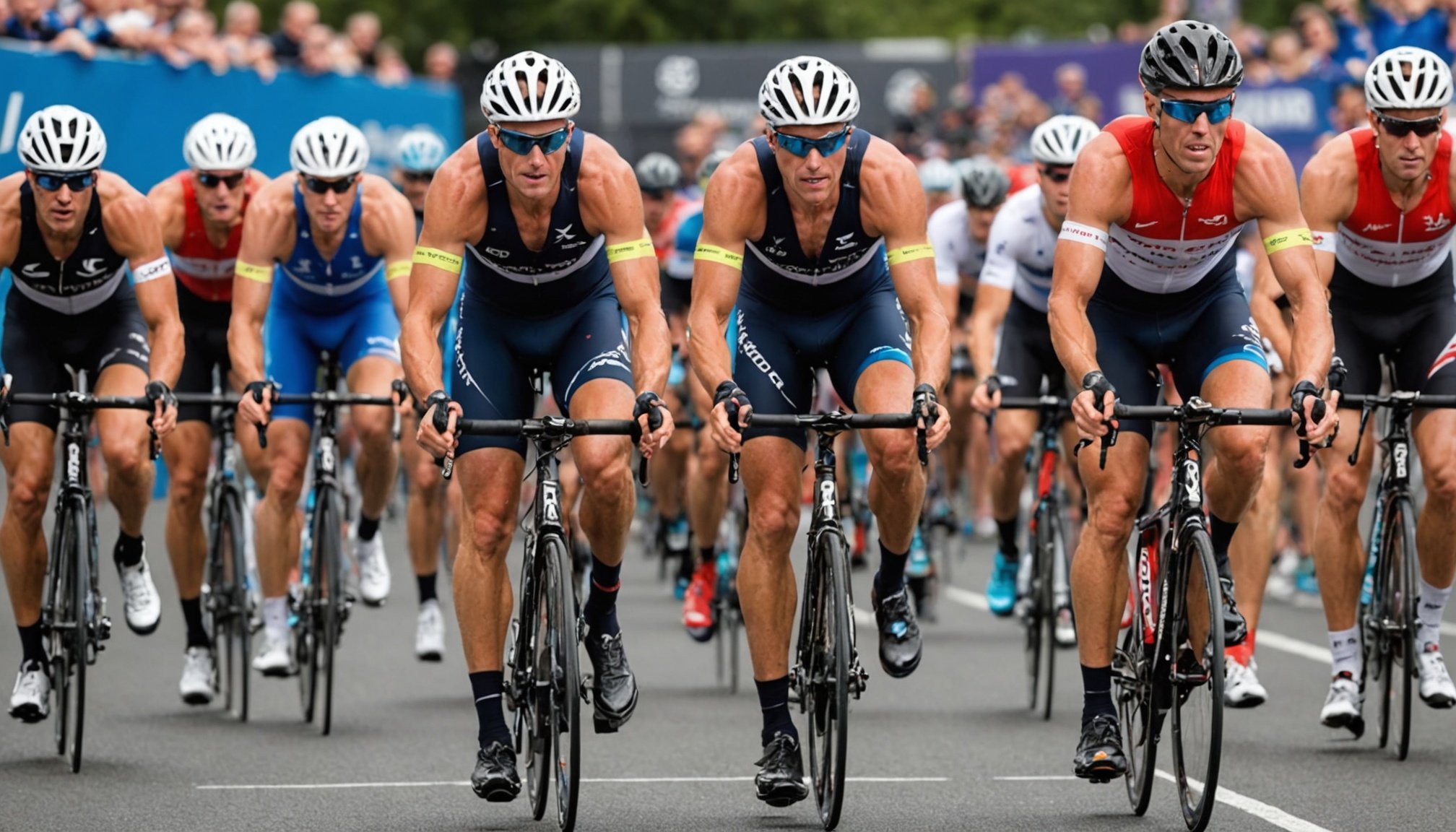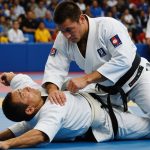Maximize Your Triathlon Success: Essential Training Tips for UK Athletes
Understanding the Multi-Sport Nature of Triathlon
Triathlon, a sport that combines swimming, cycling, and running, is a true test of endurance, strategy, and physical versatility. For UK athletes aiming to excel in this multi-sport event, a well-structured and balanced training plan is crucial. Here’s how you can optimize your training to achieve outstanding results on race day.
Creating a Personalized Training Plan
A personalized training plan is the cornerstone of successful triathlon training. This plan should be tailored to your schedule, physical capabilities, and specific goals.
Also to read : Essential techniques for uk athletes to master stress and beat anxiety
Assessing Your Current Level
Before diving into a training plan, it’s essential to assess your current fitness level in each of the three disciplines. This involves evaluating your swimming technique, cycling endurance, and running efficiency. For instance, if you’re a beginner, you might focus more on improving your swimming skills, as it is often the most daunting part of the triathlon[1].
Setting Realistic Goals
Set specific, measurable, and achievable goals. Whether you’re aiming for a sprint triathlon or an Ironman, having clear objectives will help you stay focused and motivated. As Benjamin Pelaprat, a triathlete who improved his Ironman 70.3 time from 5:20 to 4:50, notes: “Des plans construits et détaillés m’ont permis une belle progression… Multiples blessures avant son aide, mais ses conseils précieux et prudents me permettent d’éviter de nouvelles blessures.”[1]
Topic to read : Essential stretching strategies for uk athletes to prevent injuries and boost performance
Balancing Swimming, Cycling, and Running
Balancing the three disciplines is key to avoiding injuries and optimizing performance.
Swimming
Swimming is often the least familiar discipline for many triathletes. Here are some tips to improve your swimming:
- Technique Over Distance: Focus on improving your swimming technique rather than just increasing the distance. A coach trained in programs like Coachnatation2.0 or Effortless Swimming can be incredibly helpful[1].
- Open Water Training: Incorporate open water swimming into your training to get accustomed to the conditions you’ll face on race day.
- Drills and Strength Training: Include swimming drills and strength training sessions to enhance your efficiency and endurance in the water.
Cycling
Cycling is a critical component of triathlon training, requiring both endurance and strength.
- Functional Training: Incorporate functional training sessions that mimic the movements you’ll use during cycling. This can include strength training exercises like squats and lunges to improve your power output[4].
- Interval Training: Use interval training to boost your cardiovascular fitness and increase your speed. For example, alternate between high-intensity sprints and recovery periods.
- Bike Fit: Ensure your bike is properly fitted to your body to maximize efficiency and reduce the risk of injury.
Running
Running is the final leg of the triathlon and requires a combination of endurance, speed, and recovery strategies.
- Gradual Progression: Gradually increase your running volume and intensity to avoid injuries. As the podcast KM42 suggests, it’s crucial to balance running with recovery and strength training to maintain overall fitness[3].
- Strength Training: Incorporate strength training to improve your running efficiency and reduce the risk of injuries. Focus on exercises that target your core, glutes, and legs.
- Pace Management: Practice pace management during your runs to ensure you can maintain a consistent speed throughout the race.
Incorporating Strength and Functional Training
Strength and functional training are essential for improving overall performance and reducing the risk of injuries.
Strength Training
Strength training helps build the muscular endurance needed for each discipline. Here are some key points to consider:
- Specificity: Focus on exercises that are specific to each discipline. For example, squats and deadlifts can improve your cycling and running performance[4].
- Frequency: Aim for 1-3 strength training sessions per week, depending on your training volume and goals.
- Progressive Overload: Gradually increase the intensity of your strength training sessions to continue making progress.
Functional Training
Functional training involves exercises that mimic the movements you’ll use during the triathlon.
- Core Strength: A strong core is crucial for stability and efficiency in all three disciplines. Incorporate exercises like planks, side planks, and Russian twists into your routine.
- Mobility and Flexibility: Ensure you have good mobility and flexibility to maintain proper form and reduce the risk of injuries. Incorporate stretching and mobility exercises into your daily routine.
Managing Training Volume and Intensity
Managing your training volume and intensity is vital to avoid burnout and injuries.
Periodization
Periodize your training to ensure you have periods of high intensity followed by recovery periods. This helps your body adapt and improves overall performance.
Heart Rate Monitoring
Use heart rate monitoring to gauge your intensity levels. This helps ensure you’re training within the right zones to achieve your goals without overexerting yourself.
Recovery
Recovery is as important as training. Ensure you get adequate rest, nutrition, and hydration to support your body’s recovery processes.
Working with a Coach
Having a coach can significantly enhance your triathlon training.
Benefits of Coaching
A coach can provide personalized training plans, help you avoid injuries, and offer valuable advice on nutrition, recovery, and mental preparation. As Florentine, a triathlete who recovered from an injury with coaching, notes: “Arthur m’a permis de reprendre le sport progressivement suite à une blessure. A l’écoute et bienveillant, il a su trouver le parfait équilibre entre vie personnelle, professionnelle et entraînement.”[1]
Choosing the Right Coach
Here is a comparison of some top triathlon coaching services:
| Coach/Structure | Location | Focus | Monthly Fee (€) | Rating |
|---|---|---|---|---|
| ARphysioTraining | France (Cahors and online) | Performance and kinésithérapie | 100 | ★★★★★ |
| Mon Coach De Triathlon | Belgium (online) | Simple and effective programs for all levels | 150 | ★★★★☆ |
| Opentri | France (online) | Accessible coaching with personalized plans | 14.95-19.99 | ★★★★☆ |
| MyTRIBE Triathlon Coaching | France (online and in-person) | Personalized coaching with stages | 80-170 | ★★★★☆ |
| Kūpa’a Tri Coaching | France (online) | Custom plans for long distances | 98 | ★★★★☆ |
Mental Preparation and Nutrition
Mental Preparation
Mental preparation is often overlooked but is crucial for success in triathlon. Here are some tips:
- Visualization: Visualize your race day performance to build confidence and mental toughness.
- Positive Self-Talk: Use positive self-talk to stay motivated and focused during training and the race.
- Stress Management: Learn stress management techniques such as deep breathing and meditation to handle race day pressure.
Nutrition
Proper nutrition is essential for fueling your body and aiding in recovery.
- Balanced Diet: Ensure you have a balanced diet that includes carbohydrates, proteins, and healthy fats.
- Hydration: Stay hydrated by drinking plenty of water and electrolyte-rich fluids.
- Pre and Post-Workout Nutrition: Focus on consuming the right nutrients before and after your workouts to optimize performance and recovery.
Practical Tips for Race Day
Here are some practical tips to help you prepare for and perform well on race day:
Transition Practice
Practice your transitions between swimming, cycling, and running to save time and reduce stress on race day.
Gear Check
Ensure all your gear is in good condition and suitable for the race. This includes your bike, running shoes, and wetsuit.
Weather Preparation
Check the weather forecast and prepare accordingly. This could involve choosing the right clothing and gear for the conditions.
Triathlon training is a complex and multifaceted process that requires careful planning, balanced training, and the right support. By focusing on personalized training plans, balancing the three disciplines, incorporating strength and functional training, managing training volume and intensity, working with a coach, and preparing mentally and nutritionally, you can significantly improve your performance and achieve your triathlon goals.
As Thomas Garcia, a triathlete who improved his performance with coaching, says: “Merci Arthur pour le coaching depuis près de 3 ans. Des plans construits et détaillés m’ont permis une belle progression… Multiples blessures avant son aide, mais ses conseils précieux et prudents me permettent d’éviter de nouvelles blessures.”[1]
Remember, the key to success in triathlon is consistency, patience, and a well-structured approach to your training. With the right mindset and support, you can achieve outstanding results and make your triathlon journey a rewarding and fulfilling experience.











